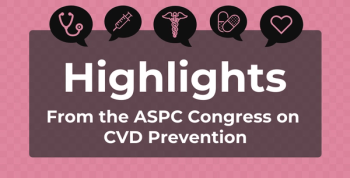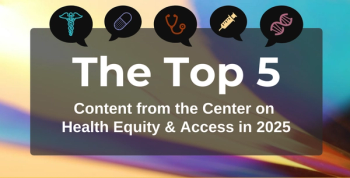
Any Physical Activity Lowers CVD Risk for Elderly, Study Finds
Physical activity, even of a low-intensity, reduces the risk of cardiovascular disease in older adults, according to a study published in The European Journal of Preventive Cardiology. Although the authors found similar associations for individuals under age 55 and individuals aged 55-65, the results were not statistically significant.
Any physical activity (PA) in elderly individuals is beneficial for reducing cardiovascular disease risk, according to a study published in
The World Health Organization has said that 150 minutes of moderate intensity PA, or 75 minutes of high intensity PA, yields major health benefits, and that any amount of PA leads to health benefits. However, “Current PA guidelines are mainly aimed at middle-aged individuals,” wrote the authors. “It is less well established whether different PA intensities also translate into cardiovascular health benefits in elderly people.”
The authors of the study analyzed data from the EPIC Northfolk prospective population study, which is part of the 10-country collaborative EPIC study. The 24,502 participants of the study, aged 39 to 79, completed a health and lifestyle questionnaire at the baseline survey between 1993 and 1997, participated in a physical examination, and gave blood samples. Standardized measures were also used for body mass index (BMI), blood pressure, and serum total cholesterol. The age of participants was categorized as: under age 55, 55 to 65 years, and over age 65.
Physical activity was measured by a questionnaire that inquired about activities in occupational and leisure time domains, and was categorized into 4 levels: active, moderately active, moderately inactive, and inactive.
A Cox proportional hazards model was used to assess the association between the PA categories and the risk of cardiovascular events in all 3 of the age groups. The median follow-up was 18 years, resulting in a total of 412,954 person-years of follow-up. Of the participants, 4450 (18.2%) experienced a coronary heart disease (CHD) event during follow up, 1231 (5%) experienced a stroke event, and 441 (1.8%) experienced both a CHD and a stroke event.
Results showed that for adults over age 65, the adjusted hazard ratios (HRs) for CVD events were 0.88 (95% confidence interval [CI]; range, 0.77 to 1.02), 0.87 (95% CI; range, 0.77 to 0.99), and 0.86 (95% CI; range, 0.78 to 0.96) for active, moderately active, and moderately inactive participants, respectively, compared to inactive participants.
While there were similar associations for participants under age 55 and participants aged 55 to 65, the results were not statistically significant.
For participants under age 55, the adjusted HRs for CVD were 0.95 (95% CI 0.76—1.18) for active participants, 0.85 (95% CI 0.69–1.05) for moderately active participants, and 1.03 (95% CI 0.84–1.26) for moderately inactive participants, compared to inactive participants.
For participants aged 55-65, the adjusted HRs were 0.84 (95% CI; range, 0.72 to 0.99), 0.99 (95% CI; range, 0.86 to 1.14), and 0.89 (95% CI; range, 0.77 to 1.02) for active, moderately active, and moderately inactive participants, respectively.
“A broader array of public health, healthcare systems, and communities should be involved in helping elderly people to engage in any PA of any level and to reduce a sedentary lifestyle,” concluded the authors.
Newsletter
Stay ahead of policy, cost, and value—subscribe to AJMC for expert insights at the intersection of clinical care and health economics.








































